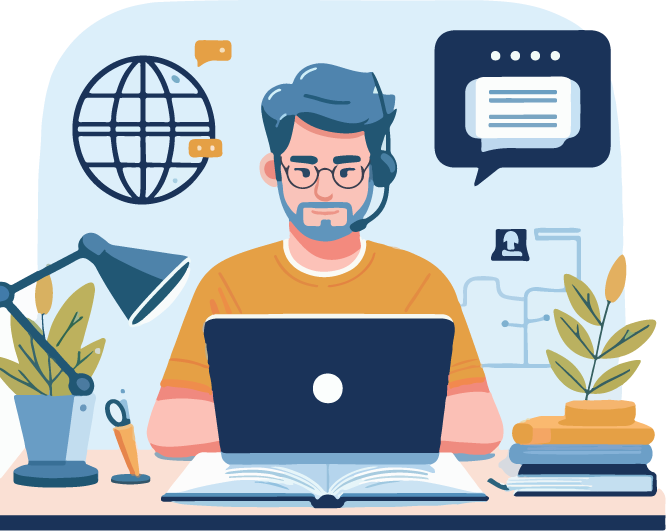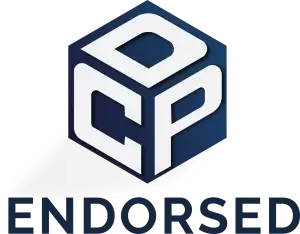In today’s dynamic professional landscape, continuous professional development (CPD) is a strategic imperative for career success. By staying abreast of industry trends and emerging technologies, you can future-proof your career and position yourself as a thought leader in your field.
There are many ways of engaging in CPD activities such as seminars, conferences and workshops; however, these are traditional methods.
These traditional methods of CPD delivery have been transformed by advancements in technology. This has made CPD more accessible, ultimately allowing everyone to develop their skills and knowledge and progress in their career.
In this blog post, we have highlighted the impact of technology on continuous learning and how it revolutionised engagement in CPD activities and events.
Tech-Driven CPD Advancements and Its Impact
1. Online Learning Platforms :
One of the most notable impacts of technological advancements is online CPD. Online platforms and educational websites have made it easier for people from all aspects of life to access knowledge. They can learn at their own speed, pause and review sections, and finish them without interruption.

The flexibility it provides fits with the growing demand for new skills and abilities in the job market. Learning Management System (LMS) provides the baseline for online learning as it serves as the foundational platform that supports the delivery, management, and tracking of educational content and training programs.
Learning Management System (LMS) and Its impact on CPD.
A Learning Management System (LMS) can be simply defined as a digital toolbox for learning and development. It contains all the tools – online courses, resources, videos, articles – required for continuing education.
There are multiple LMS software available; they are not for mere education but they also transform the way we can learn and grow in this digital era.
Some of the popular LMS used for online learning and training are as follow:
- Moodle
- Canvas
- SAP Litmos
- Talent LMS
With the advanced features to keep and store all the required knowledge, learning has been made even easier. Not only that, courses and learning materials can be easily updated, scale, and track the learner’s CPD points without spending even a penny.
Once enrolled, individuals can:
- Choose a CPD that best aligns with their demands, needs, and preferences
- Track their progress and CPD activities
- Access resources, videos, handouts
- Study anytime and from anywhere in the world
- Use a mobile phone, tablet or laptop to learn

2. Mobile Learning
Mobile phones are relatively easier to use and remove the need for the physical presence of a teacher. Today, learning is not confined to textbooks only; as technology advances, learning apps are designed to make learning even easier.
Whether one wants to learn a new language, enrol on a short course, gain a certification or grow your creative career, an app is available for you to learn and grow personally or professionally.
Some of the most notable examples of mobile learning apps are:
- Duolingo
- Udemy
- Khan Academy
- Skillshare
- Coursera
Engaging in CPD through these mobile learning apps has made learning easier and more accessible to all.
3. Immersive Technologies
Integration of AR and VR technologies has changed the way for individual’s continuing professional development.
AR (Augmented Reality) combines the real world with virtual elements which helps in enhancing the perception of the real world. AR operates through smartphones, head-mounted devices, or tablets.
For instance, medical professionals wearing a pair of smart glasses can instantly know their patient’s blood vessels, heart rate and other vital information projected on their field of view.

In addition to that, VR (Virtual Reality) completely immerses the learners in a digitally created environment. For instance, in education, history teachers can use this technology and take their students to historical places or science teachers can help their students learn how to dissect a frog virtually which ultimately helps in enhanced comprehension and better retention of complex subjects.
4. Personalised Learning Experiences
The concept of one-size-fits-all is no more! With technological advancement comes the ease of personalised learning.
Individuals, regardless of their profession, can benefit from personalised learning when engaging in CPD activities. For instance, if a nurse or healthcare professional wants to polish one skill, they can choose a CPD that can specifically fill that learning gap.

Gamification
Personalised learning also promotes interactivity and engagement via technology like gamification. We all know that educational material gets monotonous and gamification can help make it intriguing and entertaining.
Elements of gamification like think boards, badges, lead boards, or feedback provide an opportunity for a more enhanced and engaging learning experience and allow learners to retain knowledge easily.
Conclusion
With technological advancement, engaging in Continuing Professional Development (CPD) activities and events has become easier than ever.
CPD activities are not delivered through traditional methods anymore, but they can be delivered via online platforms.
Individuals who are busy studying or have limited time due to the excessive workload can engage and benefit from online CPD. They can complete the course in their own free time and track their CPD points through LMS.
Not only that, if they travel regularly, they can use mobile learning apps so that their learning process does not halt and they can continue their education without interruptions.
Above all, it is safe to say that, now, people from all professions can stay up-to-date and relevant to the latest developments in their field by engaging in online CPD. They can also choose a CPD that best matches their interests and preferences.
Frequently Asked Question
There are a range of technology-based CPD options like mobile apps, Learning Management System or other online platforms. Some of the most popular CPD delivery methods are pre-recorded videos, podcasts and eBooks.
Yes, accessing CPD activities can be difficult for some people due to barriers like lack of digital literacy or access to devices. While technology offers benefits, these obstacles can hinder participation.
Online CPD courses are available for almost all professionals. Individuals can now engage in any CPD event or activity on their own terms. They can progress and complete according to their desired pace and time, providing the flexibility and convenience that can be highly beneficial for professionals with limited time on their hands.
Technologies like AR/VR, gamification, and multimedia-rich presentations can enhance learners’ engagement as they make learning more fun and the content is easily digested by learners.
Yes, technology-based CPD can help in deeper understanding and better retention of knowledge and complex subjects. The reason is, that learning by doing is crucial today and theory alone is not beneficial anymore. Learners must know how to put it into practice and technology can help.
To make the most of your technology-based CPD, make sure your CPD goals and objectives are clear and precise. You must know what you need to achieve by engaging in a particular CPD activity. You can utilise the SMART framework as well.
























